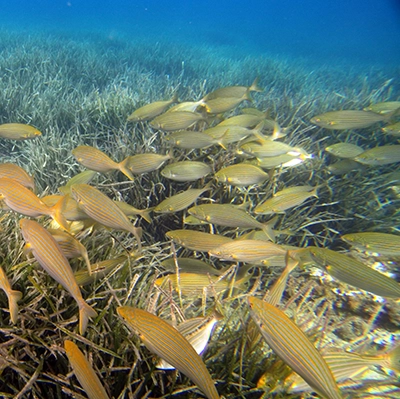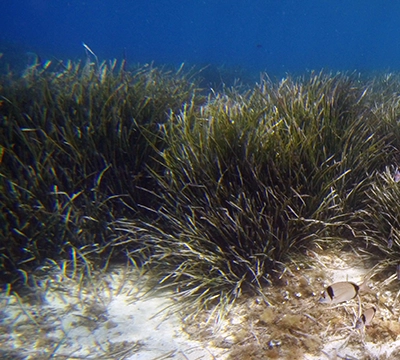

Unlike algae, Posidonia is a flowering plant that has roots stems and ribbon-like leaves that can reach one meter in length It grows in dense seagrass beds on sandy and rocky bottoms between 0 and 40 meters deep Its growth is extremely slow it extends by about 1 cm per year which makes its preservation crucial Some seagrass beds are several thousand years old
A haven for biodiversity
The Posidonia seagrass beds are home to a multitude of marine species juvenile fish seahorses starfish and crustaceans find refuge and food there
A lung for the sea
It produces oxygen in large quantities thus contributing to the purity of the water and marine life
A barrier against erosion
The dead Posidonia leaves often washed up on beaches limit coastal erosion by absorbing the energy of the waves
An indicator of good marine health
Its presence is a sign of good water quality as it is very sensitive to pollution and human activities

Anchoring of boats Anchors tear up seagrass beds which take centuries to reform Coastal urbanization The construction of ports and breakwaters disrupts its ecosystem Pollution Chemical discharges and wastewater promote the proliferation of invasive algae that suffocate posidonia Invasive species Some accidentally introduced species like the alga Caulerpa taxifolia compete with posidonia
Avoid anchoring on seagrass beds Use mooring buoys or anchor on sand
Reduce pollution Favor biodegradable products and limit plastic waste
Raise awareness among divers and sailors Respect these fragile ecosystems by avoiding walking or stirring the seabed

Posidonia is a true jewel of the Mediterranean essential for marine balance Its preservation is a priority to ensure the health of the oceans and the species that depend on it The next time you see a seagrass bed underwater or leaves on the beach remember its crucial role and help protect it
© 2024 scubaspotadvisor.com All rights reserved.